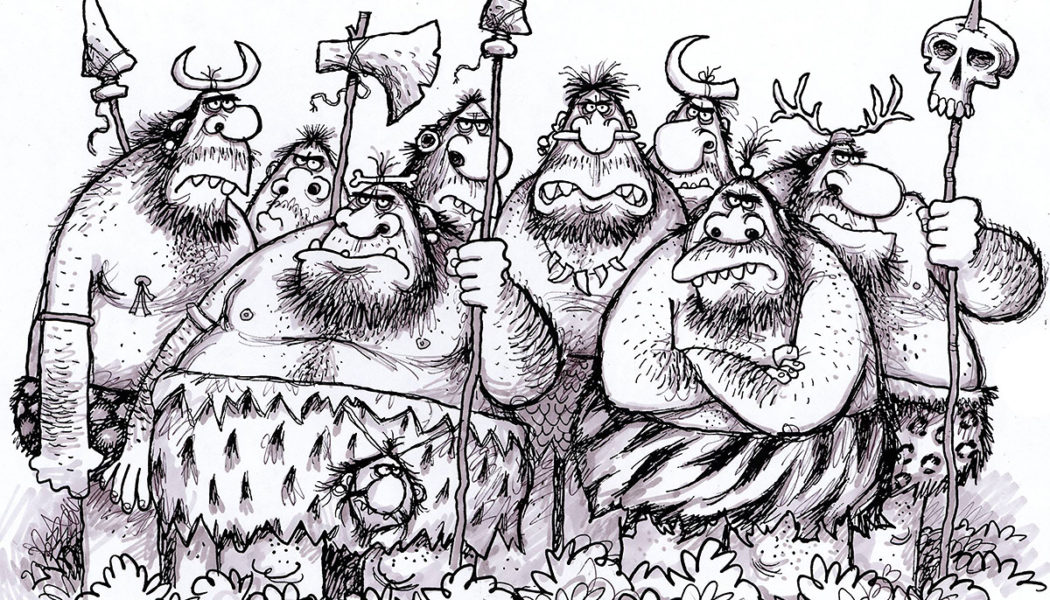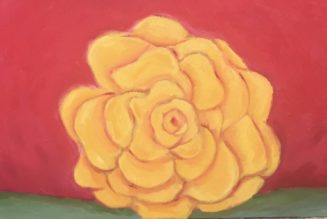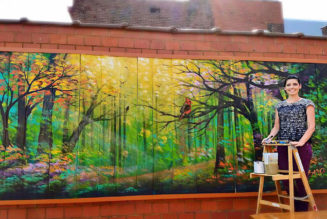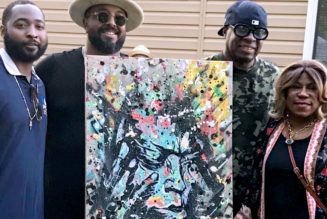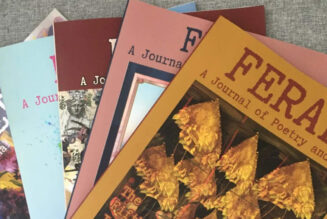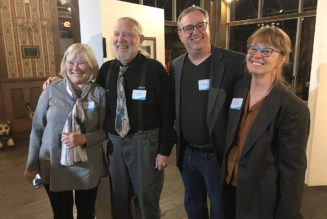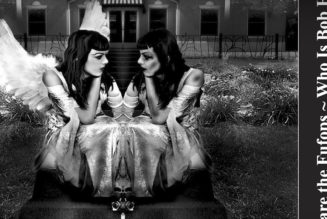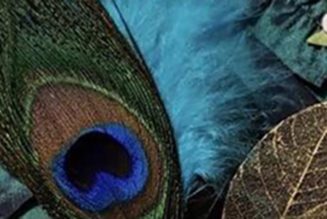by Robyn L. Kirsch
You know those little ‘yellow hellions’ that litter the covers of our children’s coloring books, clothes, iPads and on the big screen? Whether you’ve watched the “Despicable Me” and “Minions” animation films or not, the minion characters are recognizable to most.
The billion-dollar Illumination Universal Pictures film franchise of “Despicable Me” and “Minions,” has swept the globe with its pop culture icons.
One of your own metro-east residents, Glenn McCoy, 53, of Belleville, has had a hand in this pop cultural phenomenon.
While he wasn’t the sole creator of the minions, Glenn said he’s been “working on them since their inception.”
As one of the top five grossing animated films of all time, “Minions,” and its short films, which he is directing, continue to bring laughter to people and kids worldwide, which Glenn said is, “what sparks (him) the most right now.”
“I’d like to pursue that further and see where it goes,” he said.
“You can’t deny their appeal, and they’re very universal in that they don’t speak any one language, so they’re very popular around the world,” Glenn said.
He is one of the handful of storyboard artists who bring these devious, slap happy, cantankerous, yet heartwarming pill-shaped creatures to life and evolve them.
“We never expected these characters to become the cultural force that they are now. I mean they’re almost ingrained into our culture, so that was surprising,” he said.
Glenn said it’s “exciting” that he is “creating a facet of these characters who will live on … and, now I’ve had a hand in shaping the minions’ world too, so whatever small mark I leave on how they’re portrayed will carry over to the next director or writer who has to work with them.”
Similarly with the classic Disney character, Mickey Mouse, Glenn said, “You can see how they’ll be looked back on in some historical sense, in terms of how other popular cultural characters have left a mark on our society’s entertainment.”
Glenn wears many hats behind the scenes of the production of several feature animation studios including: DreamWorks SKG, Film Roman, 20th Century Fox, Illumination Universal Pictures, Walt Disney TV and Feature Animation.
He not only draws the minions and other characters from other films like “The Lorax,” “The Secret Life of Pets,” “The Grinch,” “Ice Age III” and “Sing,” he also contributes on some various scene plots and, is a director at times too.
Weaving in his own humor and style affords Glenn the ability to “have fun” doing “what he loves.”
 When he started working on the first “Despicable Me” movie, Glenn said he was a story artist throwing his own gags into the storyboards.
When he started working on the first “Despicable Me” movie, Glenn said he was a story artist throwing his own gags into the storyboards.
“As each movie that I would work on, subsequently, they would come to me, not so much to storyboard a scene, but for humor for a certain scene,” Glenn said.”So now, I’ll work with a director who will call me up and say, ‘Ok, Glenn, here’s the scene and the minions are doing this or that, give me anything you can think of.”
From there, Glenn said he will randomly write or free associate ideas that the director and writer of the movie will look at his work and it will, either, spark ideas of their own from his work or they will use his ideas in total.
“It’s just a really fun process where I try to write and draw funny stuff, which is the most simple breakdown of what I’ve always wanted to do,” he said.
In retrospect, Glenn said, solely working with Illumination now differs from his various previous employers in a very positive way.
“When I worked for other studios or syndicates there was always some creative constraint, but now it seems I’m given free rein almost to do specifically what I do best,” he said. “I don’t even like to call it work because I feel like I’m going to jinx myself.”
“Where I am now, looking back on the path that led me to what I’m doing now, it’s been very serendipitous as to how I ended up doing the work that I’m doing now. I love doing it, but there was never any real game-plan,” Glenn said.
Humble beginnings
His illustrious, award-winning art career in the vast arena of cartoon illustration and animation had humble beginnings rooted in the metro-east. It started with a dream. With a passion.
“Drawing is its own language. It is inner exploration, a personal journey into the unknown,” McCoy said.
His love for artistic expression took flight with drawing at the early age of four under the wings of his grandfather as well as his older brother, Gary McCoy.
“You know, the thing that sucked me into drawing as a kid was Charlie Brown with the ‘Peanuts’ strips by iconic Charles Schultz, and ‘Dennis The Menace’, and all these strips I read as a child, that’s what really started the fire to be a cartoonist,” he said.
The Making of a Cartoonist
And that “fire” emboldened him as the resident cartoonist at his school newspapers throughout childhood, from grade school through college at “The Alestle” at Southern Illinois University of Edwardsville where he graduated with a degree in fine arts and graphic design.
“But once you got into college, cartooning seemed like a pipe dream. I mean it didn’t seem like a realistic career path, and I don’t know why. I mean I guess it’s because you never go down the street and see a sign in the window saying, ‘Cartoonist Wanted,’” he said with a chuckle.
But like most about to enter the job force, pragmatism kept his passion at bay, but only briefly, he said.
Feeling the looming pressure of “getting a real job,” Glenn said he focused more on graphic design and illustration, “but there was that pull of being a cartoonist that was always there.”
Right out of the gates of SIUE, Glenn was brought on as the Art Director at the Belleville News-Democrat.
“I always secretly wanted to be a cartoonist, and when I saw the opportunity to start doing cartoons for the News-Democrat, that was sort of my entry point,” he said.
“But from that point on, the desire to have more of my cartoons published grew,” he said. “So, I started sending my work out to magazines and syndicates; and, my career sort of grew out of that,” he said.
Looking back, winning a 1990’s cartoonist talent search contest co-sponsored by King Features Syndicate and USA Today was “one of the big turning points” of his career, Glenn said.
“The top 300 entries would get this really beautiful giant, hardcover book on the history of cartoons,” which Glenn said. “And, I thought, ‘boy, I’d really like to have that book.’”
He thought he stood a chance of at least landing in the top 300, he said laughingly.
“So I entered, and accidentally won the contest,” he said. “I never got the book by the way, which is kinda the punch line to all this.”
Irony aside, Glenn said he cherishes what he did earn. The once-in-a-lifetime opportunity to spend a week on the east coast with a community of the top cartoonists.
“So, I spent a week up in Stamford, CT, with Mort Walker, the cartoonist who did (the 1950s) strips ‘Beetle Bailey,’ and ‘Hi and Lois,’ and, ‘Boner’s Ark,’ (in 1968)” Glenn said with a hint of nostalgia.
While the offers for Glenn to sign with King Features and other syndicates were rolling in following the contest, he said he ultimately signed with Universal Press Syndicate because they were syndicating Bill Watterson’s ‘Calvin & Hobbes’ and, Gary Larson’s ‘The Far Side’, which were two of his favorite strips at that time.
“I was thinking, ‘well, if I sign with this syndicate, I’ll be hanging out with my heroes at syndicate functions, and that will be great,’ but unfortunately both cartoonists retired the year that I signed with Universal (in 1995), so I never got the chance to meet them,” Glenn said.
Regardless, Glenn said, “I did meet every other cartoonist hero of mine throughout my career; and, I got to know Charles Schultz, who was the reason I started to begin with.”
In fact, Glenn and his wife, Laura, once flew to Santa Rosa, Calif., to have dinner with Charles and his wife, Jean Schultz, which Glenn describes as “magical.”
“I love drawing so much, which is sort of the reason why I went into being an editorial cartoonist because it wasn’t so much that I had some fire-in-the-belly compulsion to espouse my political opinions for the masses,” Glenn explained.
Instead, it was his fascination with editorial cartoonists of the time “who were making the biggest splash,” like Pulitzer Prize winners like Pat Oliphant in 1966; 3-time winner Jeff MacNelly; and, Mike Peters in 1981, Glenn said.
“I just enjoyed their drawings so much. It inspired me, and I would just pour over all of these beautiful drawings that they were doing,” he said.
Seeing that they were given such a huge chunk of “real estate” in the newspaper to do a daily drawing, Glenn said, he realized it was akin to a “gallery show every day,” which he wanted in on.
“I thought this is probably the best job in the world,” he attested.
 There was another appeal of working in print for magazines, greeting card companies and book publishing companies, according to Glenn.
There was another appeal of working in print for magazines, greeting card companies and book publishing companies, according to Glenn.
“Having your work printed the next day, there was this sense of immediacy that you don’t get with other commercial platforms,” he explained. “So I always liked doing a drawing on a Monday, having it printed on a Tuesday, and seeing the reaction on a Wednesday in the editorial letters page.”
His editorial cartoons have been nationally syndicated in prominent newspapers like the New York Times and USA Today, have been reprinted in Newsweek and have often been seen on CNN.
Glenn’s popular comic strip, ‘The Duplex,’ published in 1993, by Andrews McMeel Universal (parent company to Universal Press Syndicate and UClick), has also become a local and national pillar of the comics section in many print newspapers coast to coast. It’s even been printed in newspapers in Sweden and is still running today online. While ‘The Duplex’ started with Glenn, he now works on it in tandem with his brother, Gary.
Glenn recalls memories of “wanting to be just like him,” imitating his big brother.
And in concert, the imaginations of youthful boys grew to later create the nationally recognized single-panel 13-year strong comic strip, ‘The Flying McCoys,’ which launched in 2005. It has been featured by 150 sources including Chicago Sun Times, New York Daily News and Washington Post.
“We work really well together. Our style and humor jive well,” Glenn said. “So it’s always fun to work with him and when we’re working together on something like ‘The Duplex,’ or ‘The Flying McCoys,’ I feel like I’m eight and he’s 11 again because there’s really been that connection throughout our lives and that’s the way it’s always been. We’re really close.”
“The stuff that really inspired me or got my juices flowing were the contemporary illustrators of the time, Bernie Fuchs and Mark English and Brad Holland, and those guys, (who) were the hot illustrators of the day — the vanguard of contemporary illustration,” he said.
Some of the “older school illustrators” who were poignant role models as Glenn was developing as an illustrator himself were Frank Frazetta and Norman Rockwell, he said.
“American political cartooning is its own animal. It’s different than cartooning in other parts of the world. There’s a lineage that goes all the way back to Ben Franklin, and I really felt it was an important American art form in the same way that jazz is, and I was proud to be a part of that and working alongside shoulder-to-shoulder with journalists at a newspaper, which I think is a crucial part of our society,” Glenn explained.
But after 22 years at the BND producing editorial cartoons, Glenn said farewell to focus on his illustration and animation work.
“I felt that part of that job was to be provocative, but now we seem to be at a point in this country where being provocative can (hurt you) and the atmosphere is getting so divisive and toxic, and I wanted to focus on more simple, fun things and making people laugh and making them happy rather than possibly angry.”
Here and Now
Currently, Glenn said when he’s directing for the studio, his typical workday starts with Skyping his Parisian co-director, whose day is usually ending as Glenn’s begins.
“It’s pretty cool, so, he’ll be giving me a recap of the work he did that day and I’m explaining the work I will be doing that day,” he explained.
Glenn says his artistic process varies with the project.
Sometimes he starts with “putting pen to paper” with a sketch to later upload to his computer for advanced coloring, shading and editing digitally.
“I love good drawings and I love to try to make them. I have no formula. Nor do I aspire to find one,” according to Glenn.
Lately, the creation of his animation work is mostly created digitally, he said, but that doesn’t stop him from sticking to the basics.
“I usually carve out a couple hours every morning to sit in a coffee place and just draw, whether it’s just sketching or working on my latest assignment from the studio is a toss-up,” he said.
Family First
Whether it was the East Coast for cartoon and print syndication or the West Coast for studio animation work, traveling comes with the territory as a means of connecting with his peers on various projects over the years.
The question of relocation comes up quite often, but as his roots run deep in the Midwest, Glenn said he has no plans of moving anytime soon.
“It seemed like being in the Midwest was like the bridge between both careers, and then as I pivoted away from print and more towards animation, I found myself making more trips out to California,” he said.
But now, Glenn says utilizing Skype and email allows him to work primarily from his home studio where he can remain close to his family.
His wife Laura, a former X-ray technician, is a stay-at-home mom to their children, Molly, 17, and Jack, 14.
“She’s amazing. She helps me a lot with my writing,” Glenn said. “She’s a really good foil for bouncing ideas and she gives me a lot of good ideas, as well.”
Whether he’s dedicating his books to them, or slipping their names on the vehicle license plates or street signs in his comics or cartoons, over the years, Glenn said he always tries to honor his children in some way.
Exploratory Painting
Coming from a commercial point of view, Glenn said the rare occasion for a gallery show allows him to showcase his work that’s born from a more personal place.
“Those works were more or less gifts to myself and they stacked up in my basement or in my studio to the point where I wanted to show them,” he said. “I’ve always painted as sort of a creative release for me because I work so much in cartoons and comics and things like that, that I always felt like it’s a way to decompress to throw paint on a canvas.”
According to Glenn, he is on “stronger footing with drawing,” which is the foundation for all of his work, including his painting.
“A lot of times I’ll work in oil glazes, which allow for a stained-glass effect where you can see through the colors to the drawing underneath,” he said.
As of late, in terms of subject matter, Glenn said, he’s been on a “monster kick,” since having the opportunity to do a gallery show around Halloween.
But the season wasn’t the only thing driving this retro monster movie fanatic to paint famous monsters from the Universal Studios and Hammer Films of the 1960s and ‘70s.
“It was fun to revisit that part of my childhood and explore why I loved those movies and those images so much,” he said. “It’s sort of like a touchstone that takes me back to happier, simpler times as a kid.”
So, his large-scale approach, where he hones in on form, structure and shading, tends to stem from his childhood perception of the characters being “larger than life,” he said.
“I can sort of get lost in the face of the characters because most of the paintings are details of their faces,” he explained. “They’re like landscapes in a way because there’s so many textures and folds to explore; and, I can get lost in those meandering facial details like the hair of the Wolfman or the wrinkles of the Frankenstein monster.”
Author & Illustrator To Boot
Not only has Glenn illustrated a series of children’s books, ‘Artemis Fowler,’ for Irish author, Eoin Colfer, but he has also been at the helm of some of his own.
Some of his books include: ‘Penny Lee and Her T.V.,’ ‘Mixed Feelings,’ ‘Disney’s Tall Tails,’ and recently released last fall, ‘I See Santa Everywhere.’
Words of Wisdom
For those aspiring artists out there, Glenn advises, “(the industry) is very competitive, so if you’re going to succeed you should do it because you really love to do it and it’s what makes you happy and you feel compelled to do it.”
Thinking back to the remarks of a fellow cartoonist, Glenn said, “‘everybody has like 10,000 bad drawings in them; and, the quicker they get it out of their system, the better it is for everybody.’”
“I know a lot of young cartoonists and artists strive to achieve a style and they really work at that, and I think that’s the wrong way to go about it because if you draw a lot, the style develops organically,” he said.
 Glenn recommends, “carry sketchbooks with you at all times, and fill them up. When you’re sketching, you’re not really thinking about things like style or anything, you’re just trying to get that information from your brain, to your hand and then onto the paper and then that’s how your true style will emerge — it’s authentic when it’s not planned.”
Glenn recommends, “carry sketchbooks with you at all times, and fill them up. When you’re sketching, you’re not really thinking about things like style or anything, you’re just trying to get that information from your brain, to your hand and then onto the paper and then that’s how your true style will emerge — it’s authentic when it’s not planned.”
Moreover, Glenn said, “If a drawing is a labor of love or enjoyment, I truly believe that the viewer will pick up on (it); and, if it wasn’t fun to draw then I think that carries over a well.”
“I feel lucky and truly blessed being able to do what I love every day. It’s all very surreal, but if the end-product is just that I made some kids laugh in a movie theater or made someone chuckle over their bagel and coffee in the morning, well, I can definitely live with that,” Glenn said.
You can find out more on Glenn’s career, creative creations; and, see his daily cartoons at Glenn McCoy’s Playground website. Plus, his books, including his anthologies of his comic strips spearheaded by Andrews McMeel Publishing can be found on Amazon.com.
Staff writer Robyn Kirsch can be reached at robynkirsch84@gmail.com
Glenn McCoy’s Playground / GlennMcCoy.com
